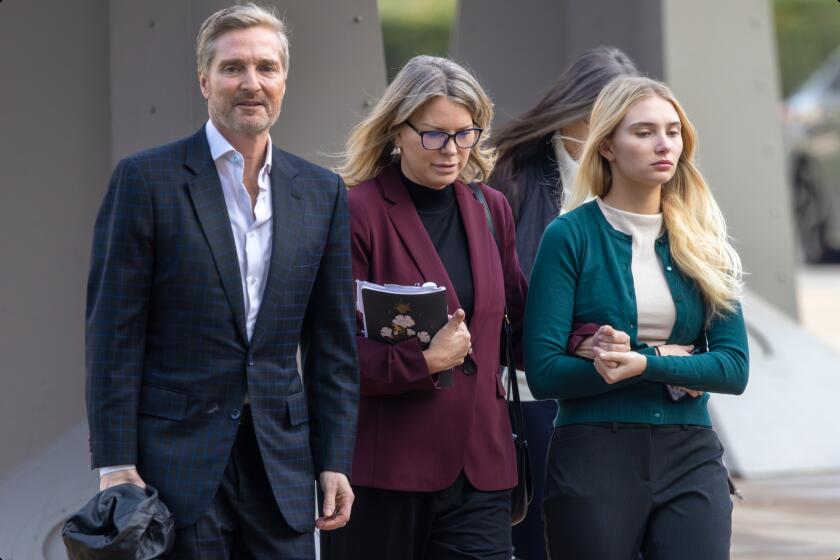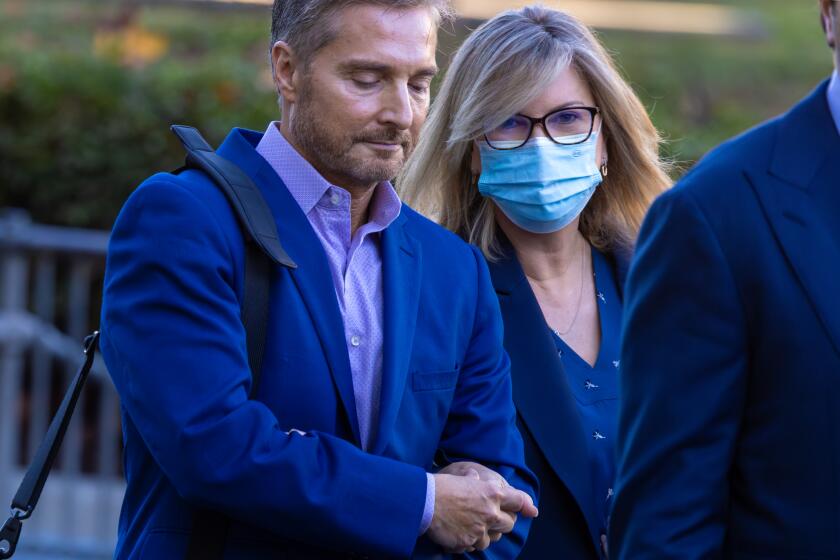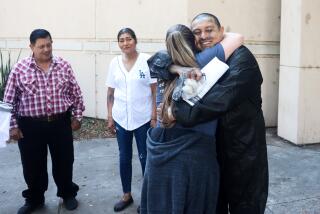Rebecca Grossman jury must decide level of malice, dueling claims, finger-pointing
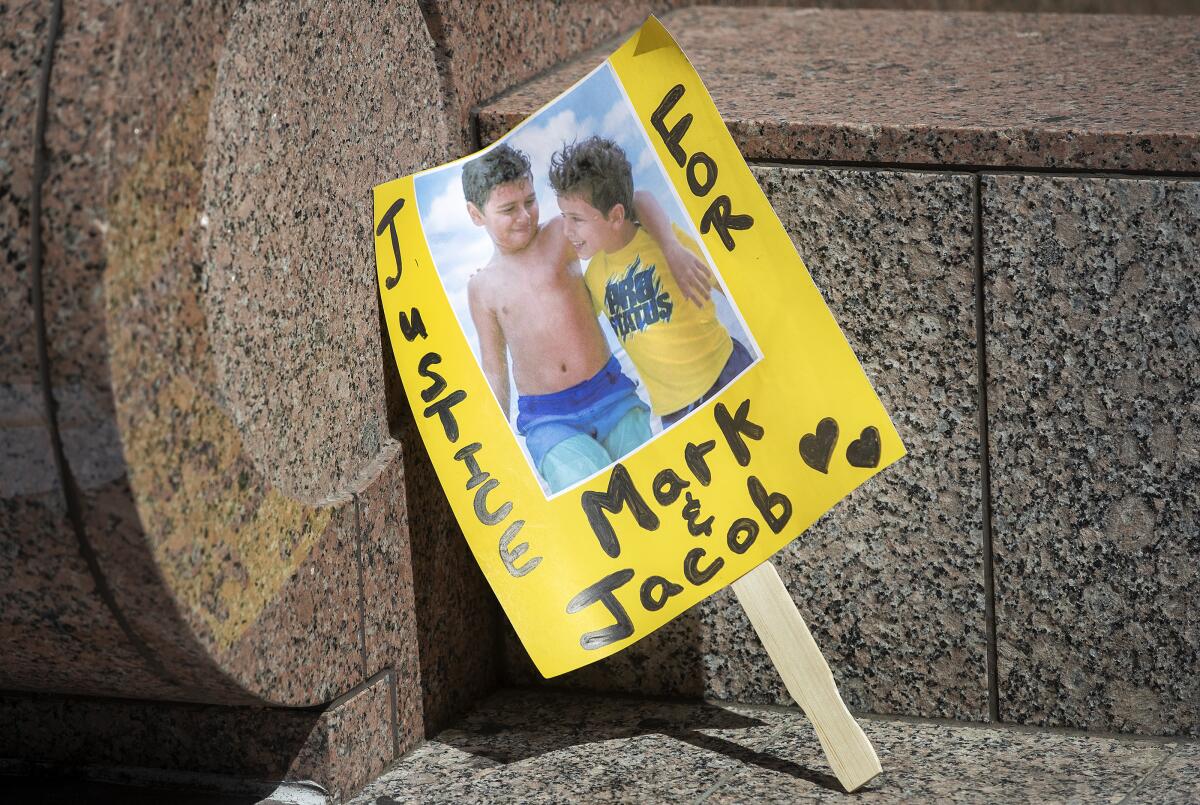
- Share via
Prosecutors have offered an unflinching description of Rebecca Grossman.
Impaired by alcohol and Valium, they allege, she recklessly sped her Mercedes through a residential neighborhood, chasing her ex-Dodger boyfriend before killing two young boys in a crosswalk.
The question now is whether jurors will believe this portrayal of a killer or see something more nuanced in the tragic events of that evening in Westlake Village three years ago.
Grossman’s defense has challenged many parts of the prosecution’s case, casting blame on her then-boyfriend, and insisting that she didn’t intend to hurt anyone and was deeply remorseful about the boys’ deaths.
An L.A. County prosecutor told jurors there is overwhelming evidence that Grossman committed murder by striking two boys as she raced her SUV through a crosswalk.
The jury is being asked to determine whether Grossman is guilty of two counts of murder, two counts of gross vehicular manslaughter and one count of hit and run resulting in death. If convicted of all charges, she faces 34 years to life in prison.
To secure a second-degree murder conviction, prosecutors must prove that Grossman acted with implied malice and knew that the act of driving at a high speed in a residential area was dangerous to human life.
But the jury could also settle on lesser charges, which would bring a significantly lighter sentence. Jurors will be able to consider vehicular manslaughter with ordinary negligence if they acquit her of those charges involving gross negligence. The lesser form of vehicular manslaughter can result in a year in jail.
Or they could, as Grossman’s attorneys have argued, find her not guilty.
Louis Shapiro, a Los Angeles defense attorney not associated with the case, said the defense has an uphill battle — but, he noted, the seriousness of the charges filed by prosecutors also is a potential barrier to a conviction.
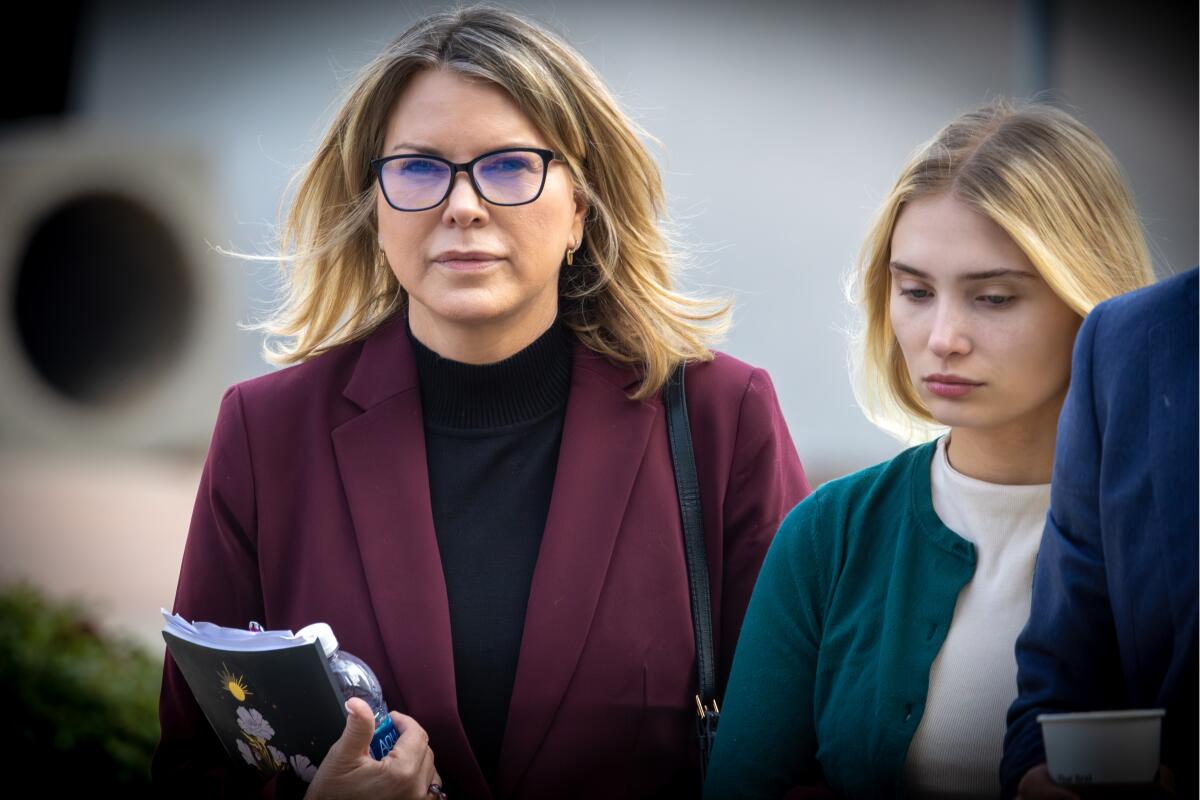
“Some jurors might find it difficult to render a murder conviction simply for the fact that this is not the typical scenario where one would expect murder charges to be brought,” Shapiro said. “They may feel a manslaughter conviction is more appropriate, and such a disagreement among jurors could result in a hung jury.”
Jurors were presented with two very different versions of the Hidden Hills woman and the Sept. 29, 2020, incident that ended the lives of Mark and Jacob Iskander, ages 11 and 8, respectively.
“This was not a tragic accident,” Deputy Dist. Atty. Jamie Castro said in Wednesday’s closing arguments. “This was murder.”
But Grossman’s lead attorney, Tony Buzbee, launched into his closing statement with words he’d repeated throughout the six-week trial: “Where is Scott Erickson?”
Prosecutors allege Grossman, 60, had cocktails with Erickson, a former Dodgers pitcher, and then raced with him — he in his black Mercedes sport utility vehicle and she in her white Mercedes SUV — along Triunfo Canyon Road until they reached a crosswalk, where she fatally struck the Iskander brothers.
Grossman, Castro said, showed conscious disregard for human life and knew her speed could be dangerous on a suburban street with pedestrian traffic because she had been warned of the dangers by police in the past. Prosecutors also have alleged that Grossman traveled a third of a mile after slamming into the children before safety features in her car automatically shut it down.
“She had a history of speeding. She’d texted about it,” Castro said. “She acted with disregard for human life.”
Rebecca Grossman’s defense team seizes on Erickson’s alleged license-plate misuse in painting him as a lawbreaker whose SUV first hit two boys. Prosecutors say it’s a red herring.
But Buzbee continued to point the finger at Erickson, who was the first to barrel through the crosswalk. Crash reconstruction experts for the defense have testified that Erickson’s Mercedes hit the boys first, sending Mark over his vehicle and onto the hood of Grossman’s vehicle.
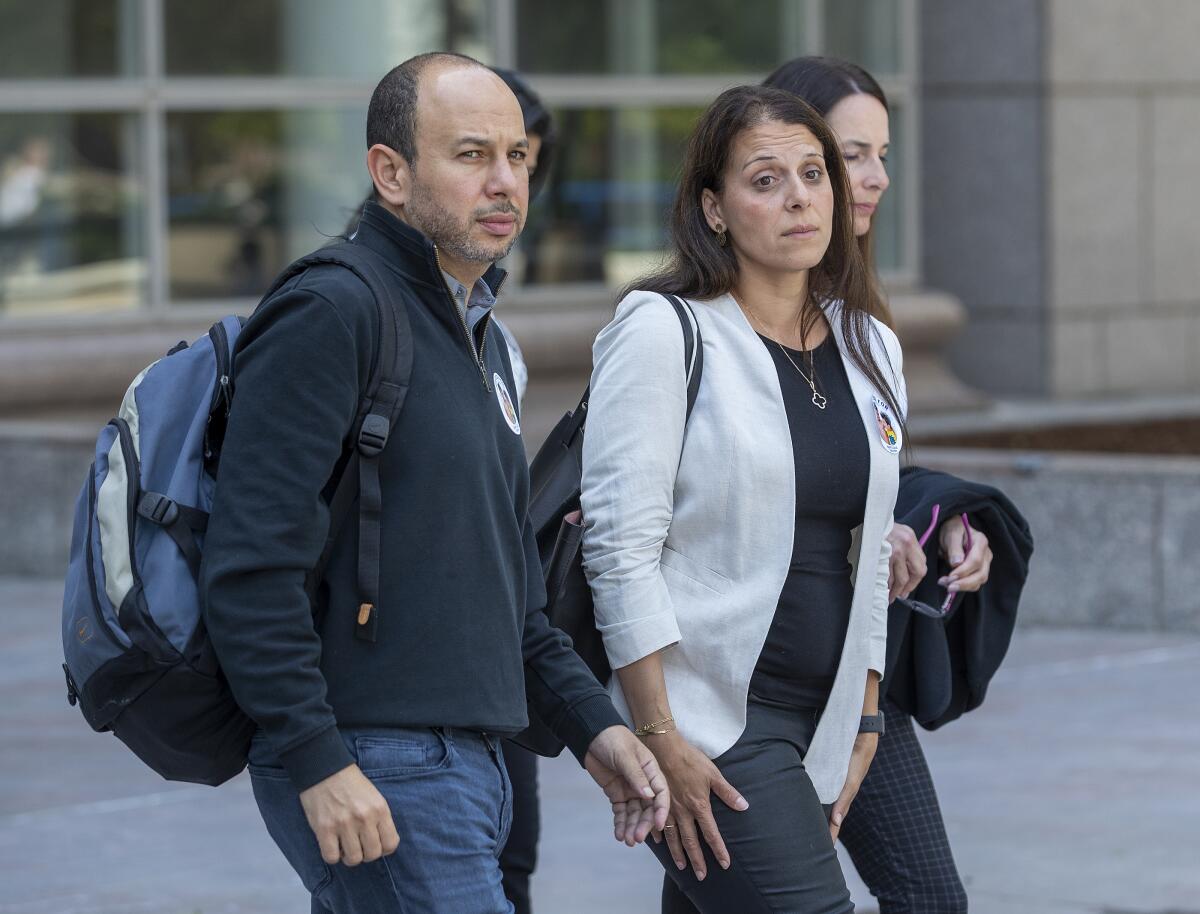
“If you have doubt that the black car hit one of those children, this case is over,” said Buzbee, who told jurors that Erickson allegedly lied to authorities about the vehicle he was driving. He said it was a 2007 Mercedes SUV, but defense experts testified based on video a short distance from the collision that it was a 2016 AMG Mercedes, which authorities never inspected.
Castro told jurors that — although Erickson was reckless — there was “not a shred of evidence” that he struck Mark or his brother: “He almost hit them but did not hit them.”
It was around 7 p.m. on Sept. 29, 2020, when Nancy Iskander and her three sons approached the crosswalk. Wearing inline skates, Iskander began to cross Triunfo Canyon Road at Saddle Mountain Drive. Her youngest son, Zachary, was next to her on his scooter; Mark, on a skateboard, and Jacob, also wearing inline skates, were also in the crosswalk.
“The mother did everything right,” Castro said. “Rebecca Grossman did everything wrong.”
Iskander previously testified that she heard revving engines and looked up to see a black SUV speeding toward the intersection. She dove out of the way, pulling Zachary to safety.
But she testified that a white Mercedes SUV was following closely behind the black vehicle. When it went through the crosswalk, Iskander said, she heard an impact, and her two oldest boys were gone.
Jacob was found near the curb about 50 feet from the crosswalk. He was taken to a hospital, where he was pronounced dead a few hours later. Mark’s body was found 254 feet away.
The prosecution has rested and the defense will begin presenting its case this week in the murder trial of Rebecca Grossman, charged in the deaths of two young boys in a traffic collision in Westlake Village.
Grossman is accused of reaching 81 mph before lightly braking and hitting the brothers at 73 mph, based on the car’s data recorder and the distance Mark was found from the crosswalk. But Buzbee called in experts who testified that the data weren’t reliable and that Grossman was traveling at 52 mph based on a video captured seconds after the collision.
Even after the impact, Castro said, Grossman “continued to drive as far as her car would let her.”
The prosecutor pushed back on the defense theory that Erickson struck the brothers first, saying the front-end damage to Grossman’s vehicle was not “the result of a child landing on the hood.”
Castro reminded jurors that pathologist Matthew Miller, who conducted the autopsy, testified that the boys’ injuries were consistent with a single vehicle hitting them. Buzbee countered that Miller, in what he considered the strongest indication of reasonable doubt, acknowledged the “possibility” that they could have been hit by more than one car.
Buzbee focused on flaws in the investigation, presenting a visual on the TV monitor with an L.A. County sheriff’s badge and the words “amateur hour.” He said investigators lost five of eight pieces of evidence from the crash scene and didn’t speak to Erickson. He said investigators ignored other cars on surveillance video and focused on Grossman: “They had a busted-up car, and the blinders were on.”
“This is an accident,” Buzbee insisted, saying the medical examiner had termed it as such, and not a homicide.
Castro conceded there were shortcomings in the investigation by the L.A. County Sheriff’s Department — with evidence missing and few photos of the scene. But during the trial, a former California Highway Patrol officer turned crash expert was able to re-create the scene.
The deputy district attorney also repudiated testimony from Grossman’s daughter, Alexis, who told jurors Friday that she saw Erickson hiding behind a tree near where her mother was detained and that he later angrily burst into her family’s home in Westlake Village. She said he smelled of alcohol and threatened to “ruin” her and her family if she told anyone she saw him.
“Alexis is a victim of her mother’s manipulation,” Castro said, noting that a deputy at the scene testified he never saw Erickson and that no one there reported his presence.
Buzbee stood behind the 19-year-old’s testimony, asking jurors, “Why did [Erickson] lie? Why did he make threats?”
Castro stressed eyewitness testimony in her closing argument. She reminded jurors that one witness, Susan Manners, testified that she saw Grossman’s vehicle hit Mark. Yasamin Eftekhari and Jake Sands, who were driving in a car behind Grossman’s Mercedes, testified that they saw the white car hit Jacob. Eftekhari, Castro noted, testified the black car never hit the boys.
Shapiro on Thursday described the defense as spirited but potentially flawed.
“The defense is arguing that there is reasonable doubt as to whether Grossman actually struck and killed the kids,” he said. “The problem with that argument is that there were two eyewitnesses who testified that Grossman’s car struck the children and the location of the damage on Grossman’s car was in front of her car — consistent with the vehicle hitting the children.”
But Lara Yeretsian, another L.A. defense attorney, said “putting another suspect to the sword may muddy up the waters enough to get an acquittal or a hung jury.”
“Remember,” she said, “the prosecution has to establish causation beyond a reasonable doubt. If the evidence is not clear as to causation, then that is reasonable doubt.”
More to Read
Sign up for Essential California
The most important California stories and recommendations in your inbox every morning.
You may occasionally receive promotional content from the Los Angeles Times.
